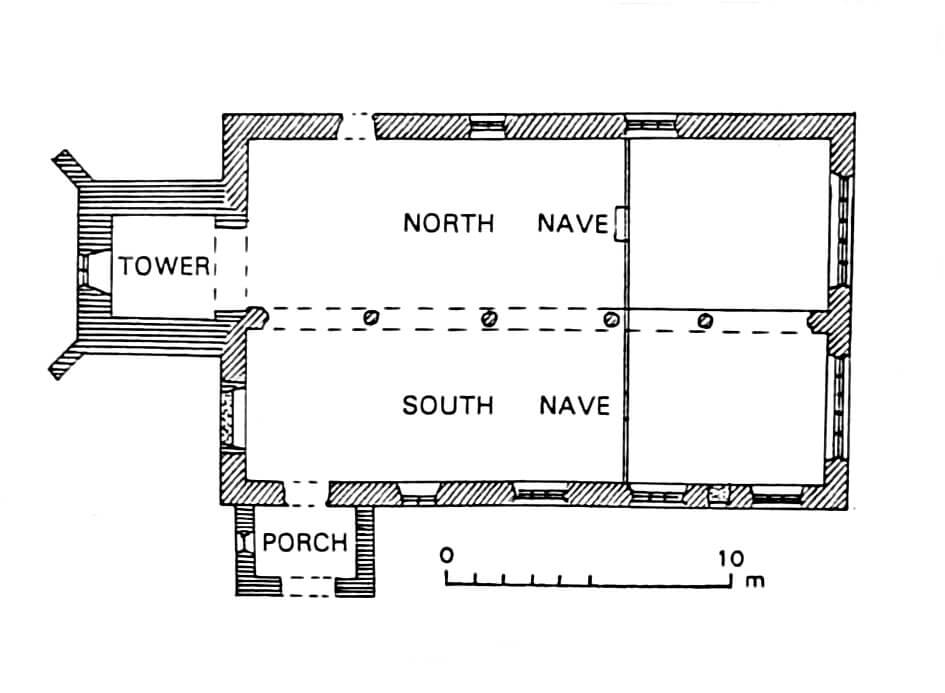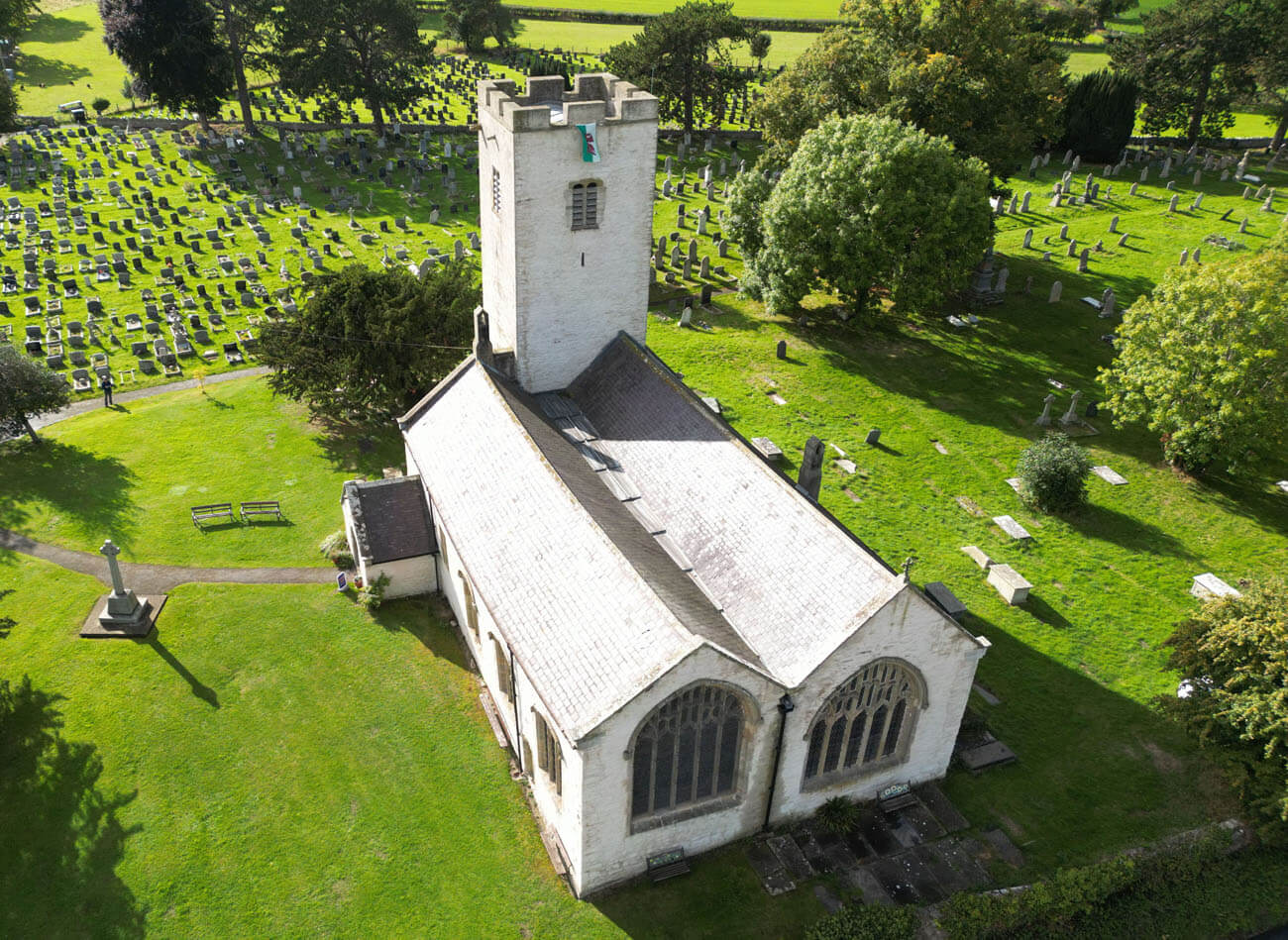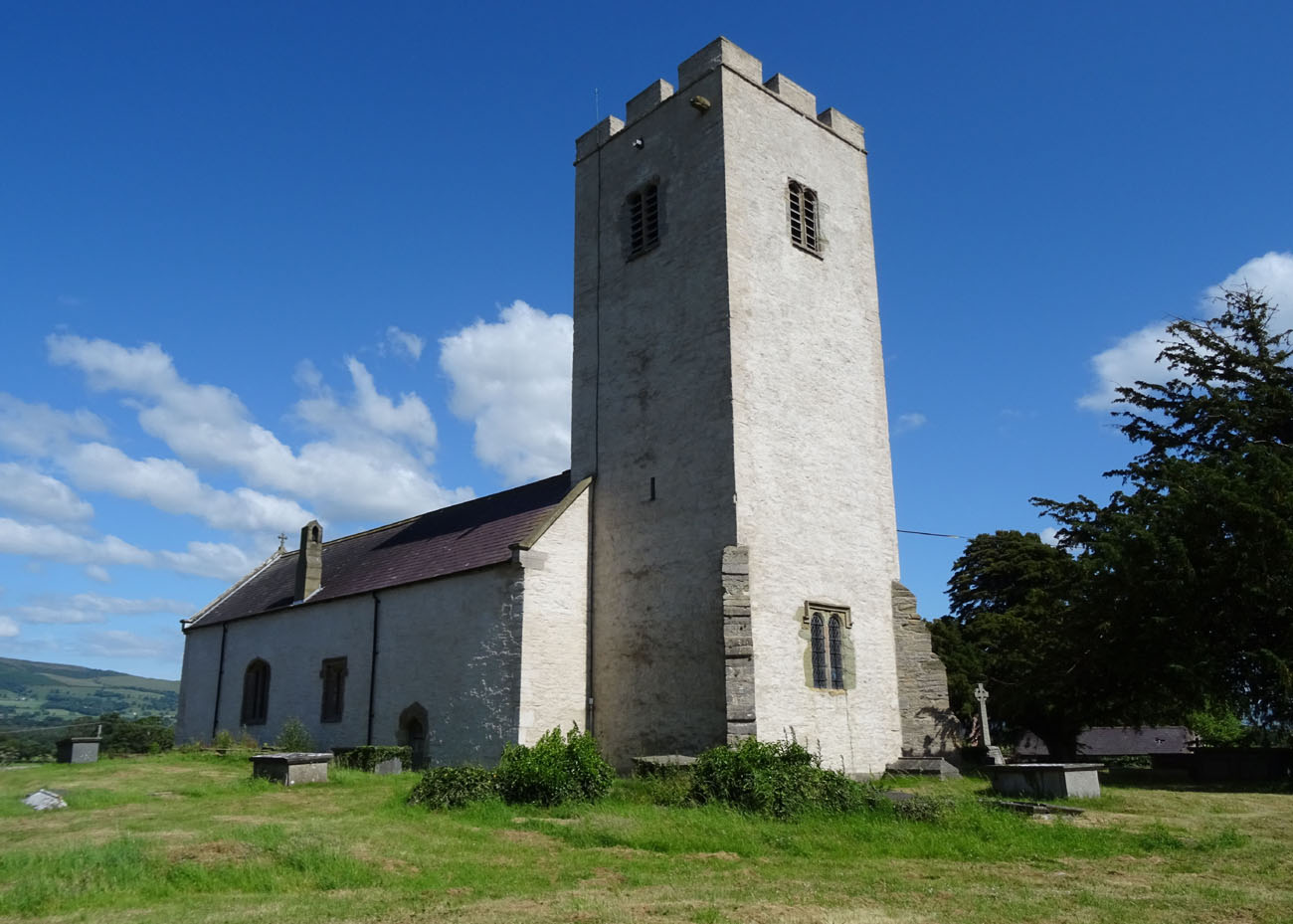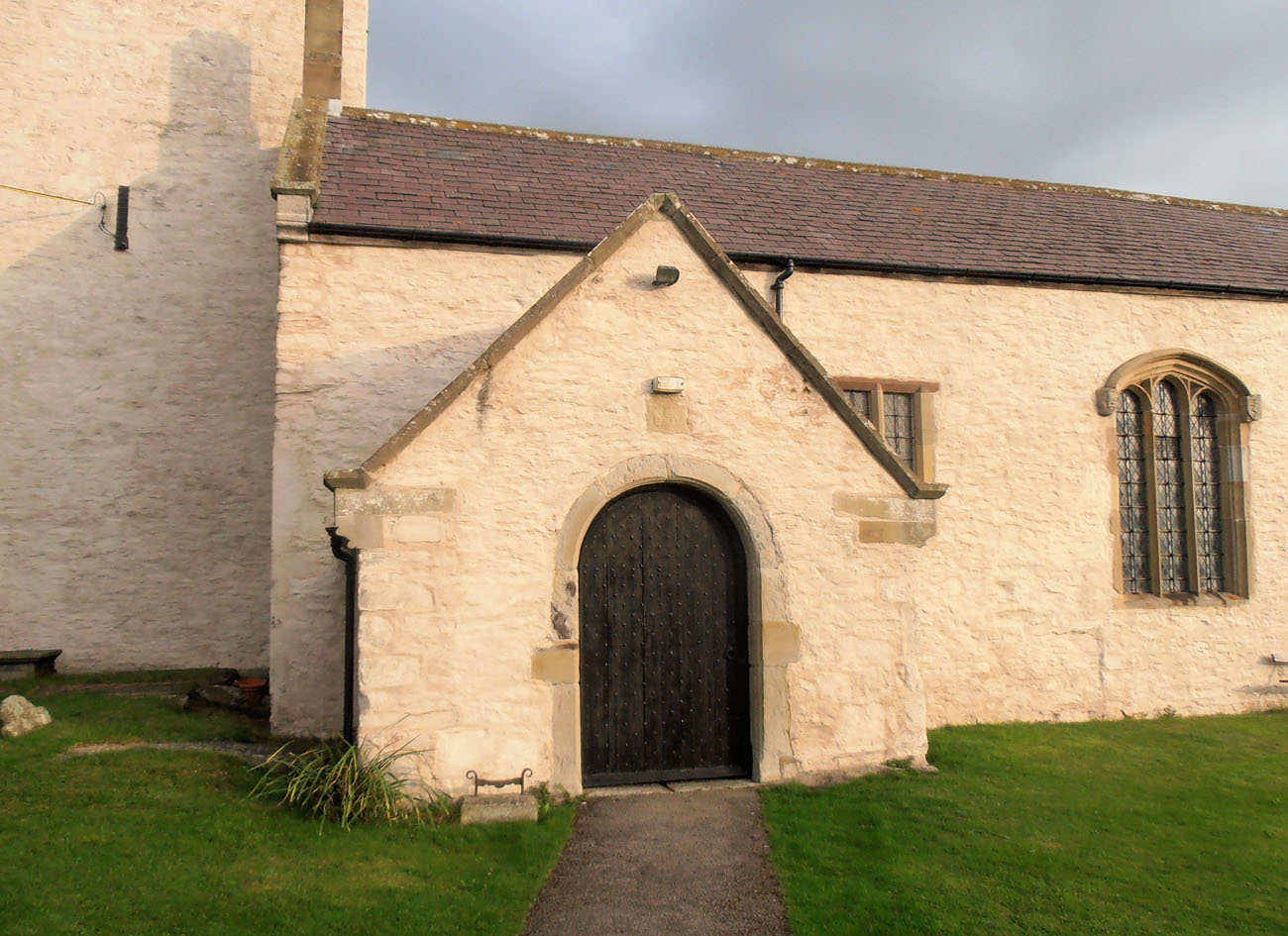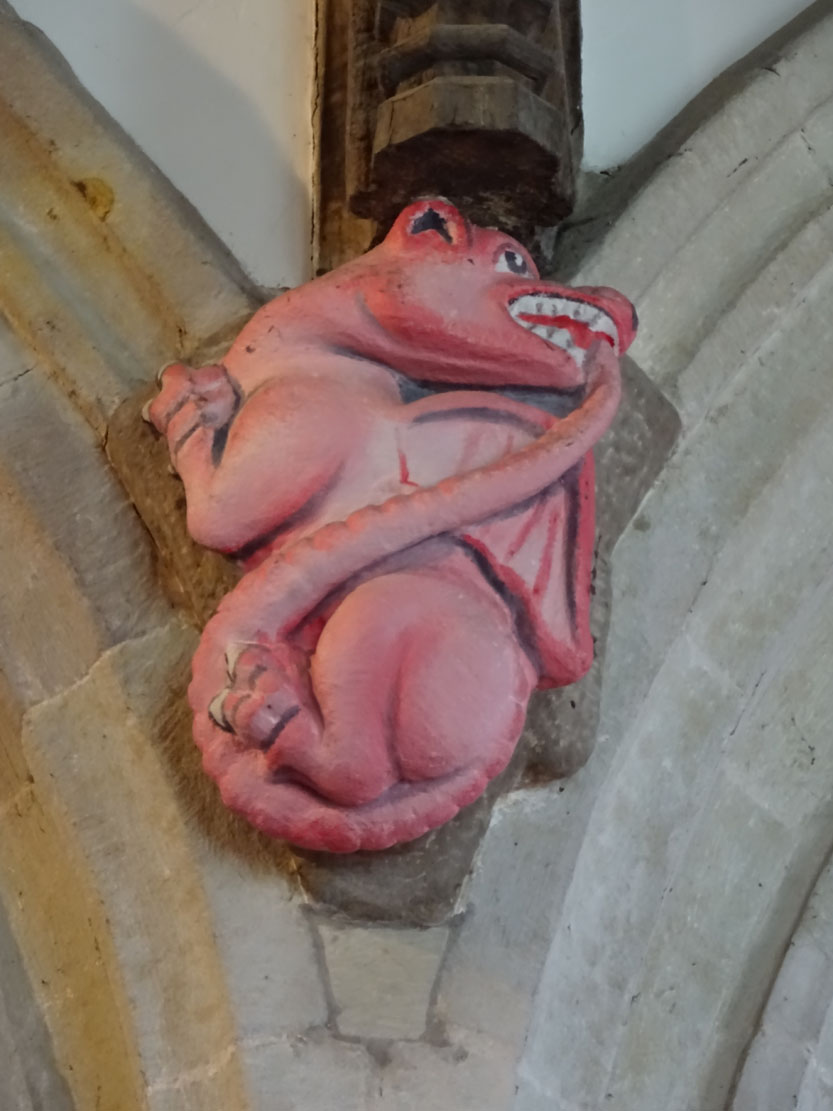History
The first information about the church of St. Marcella in Denbigh dates from the 13th century. The building was dedicated to a saint from the 7th century, which according to tradition was supposed to have a hermitage with a holy well in this place. It was such an important place for the local population that even though it was a kilometer away from the town center, it was always a parish church for Denbigh. It was also called the White Church (Eglwys Wen) probably because of the whitewashed walls. At the end of the fifteenth century, the church was thoroughly rebuilt in the English Perpendicular Gothic style. Subsequent renovations were carried out in the 19th and early 20th centuries.
Architecture
At the turn of the 15th and 16th centuries, the church consisted of two naves of equal length and width, the older of which was probably the southern one. Both were covered with separate gable roofs, without an externally separated chancel. To the south an entrance was created in the extreme western bay, preceded by a porch with a single glazed window. A stepped, semicircular portal for the vicar was located in the eastern part of the southern wall. A wide portal with a gabled head was placed in the western wall of the southern nave. The northern nave was accessed through a portal with a gabled head made of a single stone, placed in the western part of the northern wall.
In the late Middle Ages, the western side of the church was preceded by a quadrangular tower with two small, diagonally placed buttresses at the corners. Situated on the boundary between the two naves, it must have been built after their construction. Alternatively, the original single nave on the tower’s axis was demolished in the late Middle Ages, and two late Gothic naves were built in its place. The tower’s smooth facades were pierced with small slits and larger windows on the upper bell floor, above which the tower was crowned with a crenellated parapet. A single, two-light window was set in the ground floor of the western wall.
The southern wall of the nave was pierced with four windows, three of which were three-light and one two-light. Two smaller windows also were set in the northern façade of the church. One was topped with a strongly flattened pointed arch, the other set in a quadrangular jamb. The eastern wall traditionally housed the most impressive windows, filled with five-light tracery featuring motifs of cinquefoils, trefoils, ogee arches and mouchettes. It were topped with external archivolts (hoodmoulds) mounted on carved corbels (e.g., a bearded head, heraldic shield). Although the two eastern windows were similar, their dimensions and positions within the façade were different, likely due to their construction in a time interval.
The interior of both naves was adorned with a magnificent timber truss with horizontal hammerbeam roofs alternating with semicircular arch braced trusses, adorned with corbels featuring painted animal and beast heads and angels. Carved flowers, animals, and figures (e.g., a fox, a hare, a boy pulling a donkey’s tail) were also placed on the crowning cornices. Both naves were divided by a richly moulded five-bay arcade, supported by octagonal pillars with flat capitals formed by alternating shafts and grooves. The chancel had to be separated by a wooden rood screen, placed in the more important nave or in both ones.
Current state
Although neither impressive nor picturesque from a distance, the church of St. Marcel retains many valuable late medieval architectural details (carved corbels, numerous portals, window tracery, a window in the porch with a fragment of medieval stained glass, and lavishly moulded arcades between the naves), apart from the original walls themselves. Furthermore, a 15th/16th-century roof truss has survived inside, constructed unusually from two different, alternating structures.
bibliography:
Hubbard E., Clwyd (Denbighshire and Flintshire), Frome-London 1986.
Salter M., The old parish churches of North Wales, Malvern 1993.
The Royal Commission on The Ancient and Historical Monuments and Constructions in Wales and Monmouthshire. An Inventory of the Ancient and Historical Monuments in Wales and Monmouthshire, IV County of Denbigh, London 1914.
Wooding J., Yates N., A Guide to the churches and chapels of Wales, Cardiff 2011.

